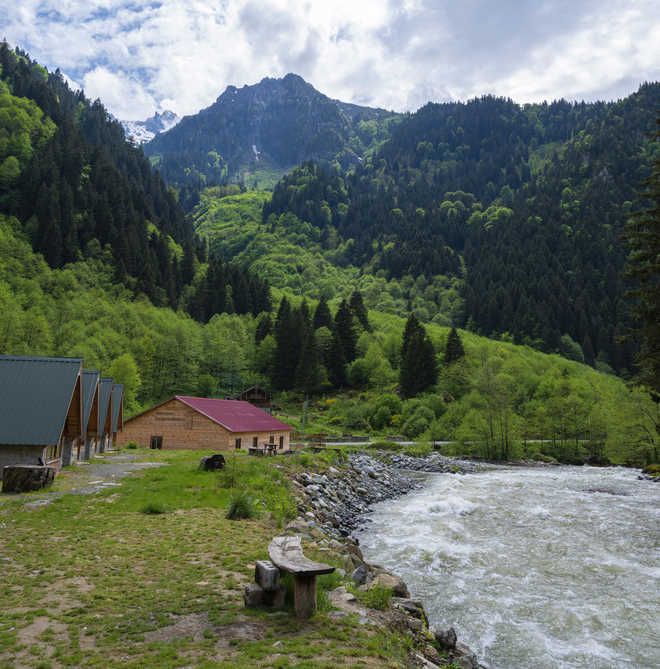
Natural wealth: A recent study by IIFM and National Tiger Conservation Authority found that 10 select tiger reserves of the country provide economic benefits worth Rs 5.96 trillion. iStock
Manu Moudgil
Environment has long been considered a standalone entity and hence ignored over economic growth. Big dams, mining, roads often require cutting of trees or diversion of forest land and those opposing these projects are often labelled anti-development. The economic benefits from these forests through provisions like fresh air and clean water are, however, not taken into account. A recent study by the Indian Institute of Forest Management (IIFM) and National Tiger Conservation Authority (NTCA) found that 10 select tiger reserves of the country provide economic benefits worth Rs 5.96 trillion. These benefits include employment generation, fishing, fodder, fuel wood, carbon sequestration, water provisioning, water purification, soil conservation, nutrient retention, biological control, pollination, gas regulation, climate regulation, gene pool protection, moderation of extreme weather events, cultural heritage, recreation, spiritual tourism and more.
A similar study done by IIFM in 2015 of six tiger reserves had found that the Corbett Tiger Reserve in Uttarakhand provides value to the tune of Rs 14.7 billion annually. This does not include the brand value this reserve created recently for Prime Minister Narendra Modi through a TV adventure show. So, it's not just the tigers who benefit.
Industry is the second biggest user of water after agriculture in India and it is already bearing the brunt of water scarcity. Can it afford to thrive without the dense forests which feed our rivers? Ecosystem valuation can thus be a means to highlight the hidden benefits. “The intent behind valuation is to highlight its unique value and worth so that enough budgets could be created for its maintenance because otherwise the natural asset erodes fast despite its priceless contribution to the society,” says Dr Madhu Verma, lead researcher of the studies on tiger reserves at Centre for Ecological Services Management of the IIFM. “For instance, our tiger habitat valuation has led to the doubling of investment in tiger conservation over last four years and declaration of more suitable habitats as tiger reserves.”
Globally, efforts are being made to assess the benefits of conservation on economy and various methods and formulas have been devised to evaluate these aspects. Provisioning services are the easiest to assess as there are market values attached to them whereas cultural or spiritual values are difficult to quantify. For instance, most tribes in India consider forests as abode to their deities and spirits of ancestors. For them, the ecosystem is invaluable or priceless.
Critics believe that ecosystem valuation can lead to commodification of nature and its sale to the highest bidder. A study in the year 2000 found that Himachal Pradesh's forests were worth Rs 1,06,664 crores. Subsequently, the state government imposed an 'environmental levy' of Rs 5-8 lakh per hectare on any project that involved diversion of forest land. Instead of conserving the forest, a price was extracted for its destruction.
“Not all things valuable are measurable and not all things measurable are measurable in money. Ecosystem valuation is helpful only if it leads to better conservation but that's not the case most of the time. In fact, it leads to commodification by putting a price on priceless assets,” says Dr Aseem Srivastava, who teaches ecological economics at Ashoka University.
Dr Jagdish Krishnaswamy, senior fellow at the Ashoka Trust for Research in Ecology and The Environment (ATREE), feels valuations have not translated into benefits for people or conservation because there is a disconnect between the big numbers put forward by studies and policy decisions. There is also a need to improve methodologies. “Levies imposed for diversion of a hectare of forest land is even less than the cost of a small city apartment. We need to improve the calculation methods and focus more on physical units like jobs generated or irrigation provided rather than worth in terms of money,” he adds.
Conservation also comes at cost to those who live in or close to the forests and other ecosystems. Any valuation thus need to first benefit them. “Creation of tiger reserves leads to the displacement of villagers. Most of the benefits of conservation, however, flow to the already rich, urban population. Any valuation thus should factor this in and ensure flow of greater benefits to the affected,” Dr Krishnaswamy points out.



























